Growing up, I never thought of myself as someone who liked winter in the slightest–but then we packed our bags for Europe in winter and headed off to a world of Christmas markets, mulled wine, and snowy villages, and I realized that winter might just be one of my very favorite seasons.
Putting together a packing list for Europe in winter, especially for your first trip, is definitely a bit trickier than in the other 3 seasons.
The best things to pack for winter in Europe tend to be heavier and bulkier than those you pack for summer (stating the obvious, I know)–and they also tend to come with higher price tags.
Plus, for those of us who, like Jeremy and me, grew up in warmer climates, understanding what exactly you need to stay warm during winter in Europe is a bit of a trial-and-error process (seriously: neither Jeremy nor I owned so much as a peacoat until we were adults).

However, you can learn from our mistakes experience with this packing list for Europe in winter!
After living in Europe and taking many trips around Europe in winter, from enjoying endless Christmas markets in December to the cold-but-manageable temperatures in Rome in February and beyond, we’ve definitely learned exactly what to pack for Europe in winter.
Here’s what we suggest adding to your packing list for Europe in December, January, and February!
Table of Contents
- How to Use This Packing List for Visiting Europe in Winter
- The Absolute Essentials for Visiting Europe in Winter
- Travel Gear You Should Definitely Pack for Winter in Europe
- Packing List for Europe: Winter Wardrobe for Women
- Packing List for Europe: Winter Wardrobe for Men
- Other Travel Gear for Your Winter in Europe Packing List
- Important Tips for Packing for Europe in Winter

How to Use This Packing List for Visiting Europe in Winter
Obviously, every packing list for Europe in winter will need to vary based on your exact trip–marveling out the northern lights in Norway will absolutely call for a different packing list than strolling through Christmas markets in Germany or seeking out winter sun in southern Spain.
This winter packing list for Europe is designed for a trip that focuses mostly on cities and villages–think Christmas markets, snow-capped villages, and cold-but-less-crowded-than-usual cities like Paris and Venice.
If you’re planning a cruise to the Arctic Circle or a skiing holiday in Switzerland, you’ll likely need to pack some travel gear not included here (also, please take us with you).
We’re more-or-less defining winter here as December, January, and February.
These are generally the coldest and darkest months of the year, and when we break out our winter packing list for Europe.

The Absolute Essentials for Visiting Europe in Winter
Passport — Good luck visiting Europe in winter without it!
Travel Insurance — We don’t ever suggest traveling without travel insurance–anything can happen on the road, and traveling abroad is definitely a case of better safe than sorry.
You can check prices and inclusions for insuring your winter trip to Europe here.
Visa (If Needed) — Though 26 countries in Europe are part of the Schengen Zone that allows many nationalities (including US citizens, Canadians, and Australians) to enter and travel freely between their countries for 90 days for tourism, that still leaves around half of Europe’s countries that are not part of this agreement.
Regardless of where you are from, always double-check entrance requirements before showing up at the airport to fly to any European country (and any country that isn’t your own).

SOON: ETIAS Waiver — While a traditional visa is not necessary for many visitors, the EU is in the process of rolling out the ETIAS waiver system that will apply to most visa-exempt travelers from outside the EU.
While not active for winter 2025-2026, it is currently slated to begin in the last quarter of 2026.
When up and running, this will essentially be a brief form that will need to be filled out, paired with a small fee (7 Euro) that will need to be paid before entering any of 30 European countries.
It sounds more complex than it is, but for now, we recommend checking this site for any updates before your trip to Europe (as of October 2025 when I am updating this blog post, we are at least a year out from ETIAS coming into effect, but given how much it has been in the news, we want to include the details here).
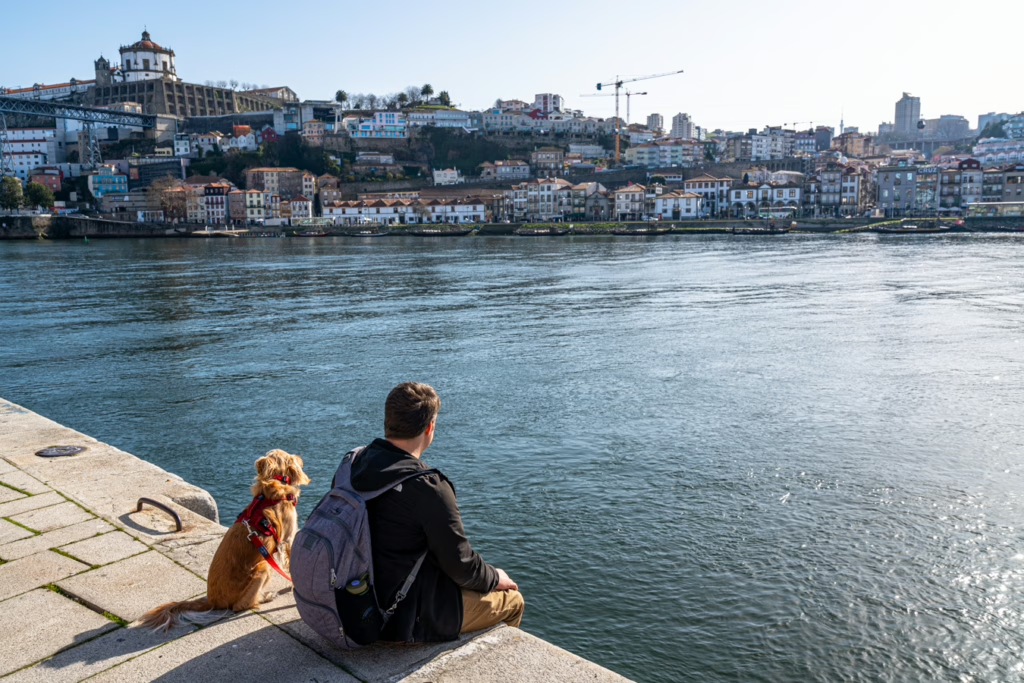
FOR UK Visitors: ETA Waiver — If your winter vacation in Europe includes a visit to the United Kingdom, you’ll now need to procure an ETA, which is essentially the same thing as an ETIAS waiver, simply the UK’s version.
The ETA waiver went into effect starting in January 2025, and as of the time of writing costs 16 pounds. You can get all the details needed and apply on the official government website here.
We got our own ETA waivers for our recent trip to Scotland and England back within a few minutes of applying–the whole process only took 15 minutes or so for our family of 3.
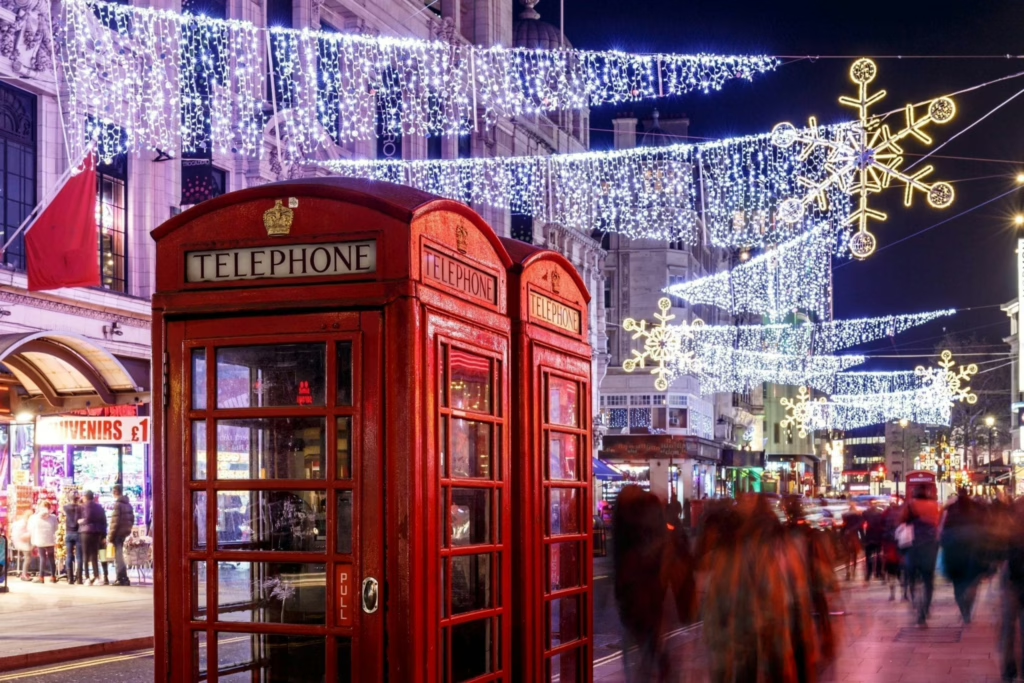
Money — We recommend bringing two credit cards (one to use, and one to keep as a backup) and two debit cards when traveling abroad.
Ideally, bring cards with no foreign transaction fees.
We’ve never felt it necessary to obtain currency before arriving (we just withdraw from an ATM when we get there), but you can purchase most currencies in your home country if it makes you feel more comfortable.
Keep in mind that not all countries in Europe use the Euro, so be sure to double-check what currency you’ll need based on your itinerary!

International Driving Permit — If you are coming from outside the EU and plan to rent a car during your winter trip to Europe, you may need an International Driving Permit to do so!
Italy is particularly well-known for enforcing this requirement.
Be sure to check the rental requirements in any country that you plan to drive in before you arrive!
Each IDP is good for one year, so if you’ve used one in the past, you might need a renewal.

Travel Gear You Should Definitely Pack for Winter in Europe
Camera — We have been using our Sony a7R III for several years now and adore it, but whatever camera you’re comfortable with works (and these days, your phone is probably plenty).
Just make sure you have something with you to preserve your memories!
Travel Adapters for Europe — If you’re coming from outside of Europe, you’ll definitely need adaptors for your electronics.
Be sure to check the requirements for any particular countries you visit–the United Kingdom, for example, is well-known for using different plugs than most of the continent.
If you’re visiting the UK, Ireland, Cyprus, or Malta as part of your trip, we recommend also adding these adapters to your winter packing list.

Pacsafe — We can’t recommend our Pacsafe
enough: this travel safe is affordable, sturdy, easy to pack, and will help keep your valuables safe in your hotel room.
(Not that you should need to worry much about theft from your hotel room during your trip to Europe, but it’s better to be safe than sorry).
Comfortable Day Bag — We currently use Pacsafe’s sleek anti-theft backpack and love it, but if you don’t want to shell out the cash for this trip, that’s totally understandable.
Just aim for something comfortable to wear, not flashy, and medium-sized–we used my old Northface Jester backpack from school for years and loved it as well.

Umbrella — Option A: Plan on buying an umbrella when it starts pouring down rain. Option B: Plan in advance and buy a (probably much sturdier) umbrella before leaving. Option C: Hope you get lucky with the weather.
In our opinion, Option B is definitely the best! This travel umbrella has been a reliable part of our packing list for years now.
Portable Phone Charger — Don’t stress about your phone losing charge on the go: pack a portable phone charger to throw into your day bag!
This is especially important when traveling Europe in winter, as being out in cold weather will drain your phone battery faster than usual.

Tote Bag — Incredibly light and easy to pack, a tote bag can serve as a grocery bag, laundry bag, or just about anything else.
When packing for Europe in winter, there’s definitely a better-than-zero chance it will become your Christmas market shopping bag (ours sure does, anyway).
We’ve been carrying a tote bag with us for almost as long as we’ve been traveling, and there’s never been a single trip where we didn’t end up using it!

Reusable Water Bottle — Save both money and plastic during your autumn trip to Europe and add a reusable water bottle to your packing list!
I love this metal one and have had it for a few years now.
It comes in especially handy at Christmas markets, where it’s nice to occasionally drink something other than mulled wine with salty snacks!
Swiss Army Knife — Want to open wine bottles in your hotel room, slice cheese from the market, or cut up that baguette from the bakery?
You’ll be so glad you brought along a Swiss Army Knife!

Apple Air Tags — Air Tags are a relatively new addition to our Europe packing list, but we’ve loved having the extra security when checking out luggage!
They’ll be coming with us from now on.
Student ID — If you’re a student, you’ll be entitled to lots of discounts on museums and attractions throughout Europe (though note that this is sometimes just for EU residents–be sure to double-check individual attractions before getting your hopes up).
If you’re a student, be sure to add your ID to your winter packing list for Europe.
Hand Sanitizer — We carry this everywhere, and never been sorry to have it floating around in our day bag.

Cell Phone eSIM or SIM Card — Back in our backpacking days, we spent more than a year traveling without working cell phones, just relying on wifi… and while that’s completely fine, we would never go back.
Consider buying an eSIM, purchasing an international plan for your cell phone (most carriers offer them), or, if you have an unlocked phone, you can just buy a local SIM card once you land in Europe.
Personally, these days we simply buy an eSIM from Airalo before each trip, and marvel at how much easier using our phones abroad has gotten since we started traveling!

Packing List for Europe: Winter Wardrobe for Women
Deciding what to wear in Europe in winter will certainly be highly influenced by where exactly you’re going–but if you’re looking for an excellent base, all-in-one female wardrobe for Europe in winter, this is it!
Base Layer
If you’re headed to southern Europe, you can probably get away without packing some cozy thermal tops and leggings, but northern and even central Europe are a different story!
Even in southern Europe, my trusty fleece-lined leggings are a must-pack for winter trips.
Further north, you’ll definitely want to make sure you’re even more bundled up. This thermal set is a great option.
Dresses
My personal preference is basically to live in dresses when visiting Europe in winter (and always, really), so I tend to pack a ton of them.
Layered with fleece-lined leggings, a thermal layer if necessary, a warm coat, cozy boots, and great accessories, dresses like this or like this work great for winter in Europe.
If you have room in your suitcase, consider bringing an adorable sweater dress along as well.
Maxi dress fan? Maxi dresses like this can be great for keeping warm during winter in Europe, but bear in mind that in snowy/icy/wet conditions, the bottom might get dirty and uncomfortable, so plan accordingly.

Tops
Thin sweaters like this that are easy to layer and cute tops like this are perfect for exploring Europe during winter.
A fun chunky sweater is a great way to mix things up, but to save space, we recommend only packing one, and only if you have space in your luggage (you can also opt to wear it on the plane, which is what I often do with mine).

Bottoms
A great pair of jeans is classic and cozy when packing for Europe in winter, and thick fleece-lined leggings like these are an excellent option as well, especially for travel days.
If you prefer wearing pants most days you might also like to bring an additional pair of jeans–black ones like these are a great way to mix things up.
If you like skirts, consider packing a cute skirt like this to layer with thick tights.

Waterproof Boots
A good, cozy pair of waterproof boots is incredibly important when putting together your winter packing list for Europe. More likely than not, you’ll wear them almost 24/7, so they need to be comfortable, functional, and fashionable.
I’ve had and loved (the previous version of) this pair for years, and recently added this pair to my rotation as well (mostly for non-snowy places, though–opt for something taller otherwise).
Unless you’re planning a hiking or skiing trip–something where you’ll be out in nature with heavy snowfall–I personally feel that snow boots are overkill.
As far as more general tall boots go, I love options like these, but they can be a pain to travel with because they’re so bulky. If you must bring some, make sure they’re comfortable enough to commit to wearing them on travel days!
Of course, with good boots you need good socks–look for moisture-wicking wool ones like these to help counteract the inevitable reality of sweaty feet.

Coat
Your coat, along with your boots, is among the most important items to pack for winter in Europe.
Be sure to choose a coat that’s lined, and if you don’t pick one that’s waterproof (to be honest, I generally don’t, but that’s personal preference), be sure to also throw in a travel umbrella and/or a rain jacket (I use one very similar to this one in places like Scotland and Iceland).
If you’re sticking to southern or central Europe, something like this or like this is similar to what I generally choose and am comfortable in.
If you’re headed to northern Europe or you just tend to get cold faster than average, you might want to consider bringing a long puffer coat like this.
Puffer coats are cozy and ubiquitous in Europe in winter, but like tall boots, a hassle to travel with!

Bathing Suit
Seem counterintuitive to add a bathing suit to your packing list for Europe in winter?
Depending on your trip, it might be!
If you’re headed to somewhere famous for saunas (like Finland) or hot springs (like Iceland), htough, or even just to a hotel with a jacuzzi or sauna, you may be thrilled to have one along!

Accessories
Accessories during winter in Europe are absolutely essential.
Don’t start packing for Europe in winter until you’ve picked out a cozy hat, scarf, and gloves at the absolute minimum.
If you plan to take tons of photos when out and about in Europe (who doesn’t?) make sure that your gloves are touchscreen compatible!
Also, fair warning: while you absolutely want to have the basics covered, don’t worry much about packing extra hats and scarves for your winter trip to Europe.
That’s what all the markets are for!

Pajamas
I don’t include these on our packing lists for Europe in any other season, but winter is an exception.
In our experience, hotel rooms in Europe during winter pretty much come in two categories: sweltering and freezing.
If you happen across the second, you’ll be thrilled that you took the time to pack some cozy pajamas for your winter trip to Europe! I recommend something like these (whimsical pattern optional, but highly encouraged).

Packing List for Europe: Winter Wardrobe for Men
Base Layer
As I mentioned in the female packing list section, you will probably be able to get away without a base layer in southern Europe most of the time… but if you’re headed further north, definitely be sure to pack a thermal set layer underneath your clothes!
Tops
Long-sleeved shirts like this and thin sweaters like this are both great options to add to your winter packing list for Europe.
If you prefer thick, chunky sweaters, you can certainly throw one like this in your bag, but bear in mind that they do take up lots of space and generally still need to be layered with other things.
Bottoms
Winter in Europe calls for a good pair of jeans like these.
You’ll want to bring along some additional slacks or chinos as well.

Waterproof Boots
A comfortable pair of warm, waterproof boots is essential to your Europe winter packing list. Jeremy has had this pair for years and loves them.
Be sure to bring along some moisture-wicking, warm socks as well–we suggest wool ones like these–to counteract the possibility (really, almost guaranteed reality) of sweaty feet.
Unless you’re planning a hiking or skiing trip–something where you’ll be out in nature with heavy snowfall–I personally feel that snow boots are overkill.
Bathing Suit
If you’re headed to a hotel with a jacuzzi or sauna, consider throwing a bathing suit into your suitcase!
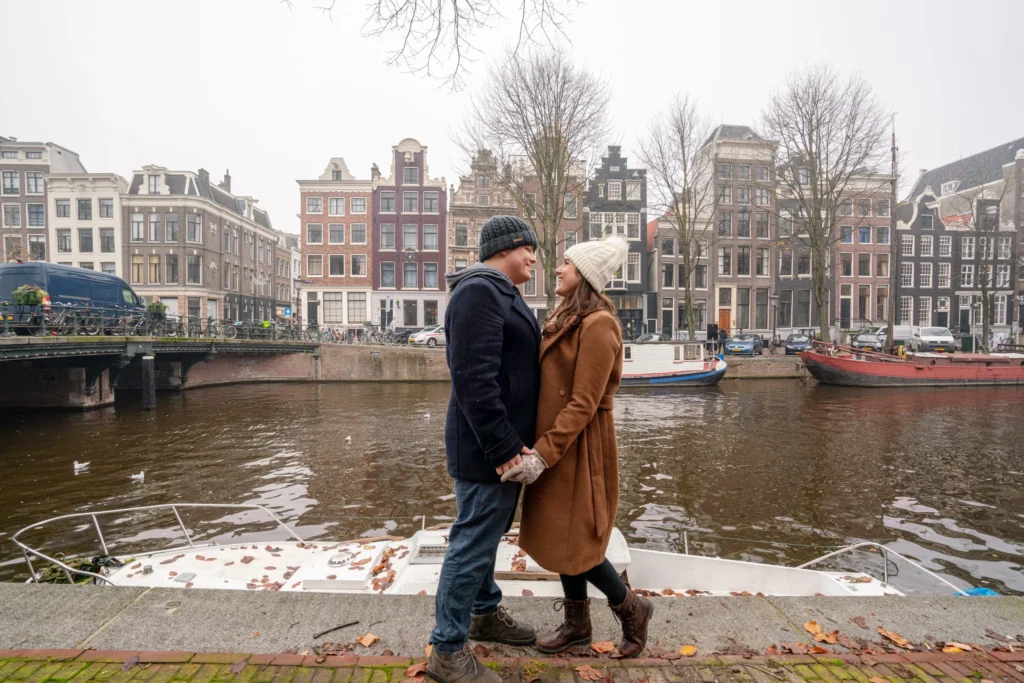
Coat
When deciding what to wear in Europe in winter, choosing your coat is among the most important items.
Choose something lined and very warm. If you’re traveling in central or southern Europe and layer appropriately, something like this should work fine.
If you’re headed further north or plan to do a lot of outdoor activities in the snow, you’ll want to strongly consider a puffer coat like this.
If you don’t choose a coat that’s waterproof, be sure to bring along a travel umbrella and/or a raincoat when you go out.

Accessories
A warm hat, scarf
, and gloves (we recommend touchscreen gloves like these so you can use your phone with them on) are must-haves when packing for Europe in winter.
While it’s most comfortable to arrive in Europe with at least one of each, don’t worry too much about extra hats and scarves. Extras can make for fun and easy-to-find souvenirs from your winter trip to Europe.
Pajamas
As I mentioned in the women’s section on what to wear in Europe in winter, we don’t tend to pack pajamas for most seasons in Europe… but if you happen across a particularly freezing hotel room, you’ll be incredibly glad you packed a set of cozy pajamas.
If you tend to prefer to stay extra warm when you sleep, consider throwing them in when packing your bags!

Other Travel Gear for Your Winter in Europe Packing List
Moisturizer and Lotion — Dry skin is a notorious problem when traveling in Europe in winter! Be sure to bring a good face moisturizer, and a good body lotion as well.
For lotion, we definitely recommend packing the kind that comes in a puck instead of a traditional bottle.
It’s so much easier to pack and carry that way, and there’s no chance of the top of the bottle accidentally opening and damaging your clothes (definitely had that happen before).
Unless you’re particularly loyal to your brand, we also recommend packing just enough lotion for the beginning of your trip–it’s easy enough to buy in any pharmacy as you explore!

Lip Balm — Trust me: trying to eat delicious, salty snacks at a European Christmas market with chapped lips is a special kind of annoyance!
Sea Bands & Non-Drowsy Dramamine
— If you’re prone to motion sickness like me, I strongly recommend adding Sea Bands and Dramamine to your packing list for winter in Europe.
You just never know when a rough ferry ride or winding mountain road might call for some assistance!

Insulated Tumbler — Look, this one is personal preference, but if you enjoy the luxury of sipping on a hot cup of coffee or tea at your leisure while walking through frigid streets as much as we do, consider adding an insulated tumbler to your packing list for Europe this winter!
We started carrying these several years ago, and love having them with us on cold-weather trips.
There’s nothing quite like going for a winter stroll with a hot drink in hand!

Money Belt — This is up to you: we no longer use one, but if you’re more comfortable having your passports on your person while exploring Europe this winter, you can consider bringing one.
We used to use this one and had no complaints!
Travel Journal — If you want to keep a travel journal during your winter trip to Europe but can’t commit to a huge amount of writing each night, I can’t recommend the One Line a Day Journal
enough!
I’m well into my second volume now and absolutely love it. My only regret is not starting sooner!
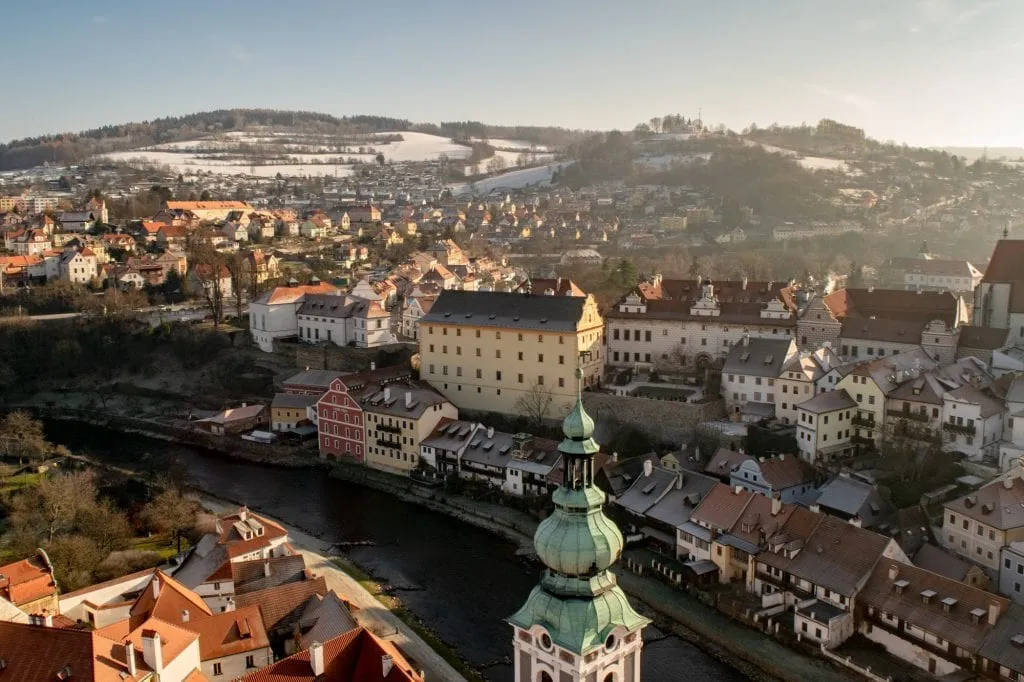
Basic Medication — Some people prefer to buy medication for basic headaches, fevers, and stomach aches as needed, but who wants to deal with language barriers when they’re sick?
We’ve never regretted packing our own basic meds.
Extra Batteries — If you do choose to bring a camera with you to Europe this winter, you’ll likely want to stock up on extra batteries!
The further north you are going on your winter trip to Europe, and especially if you’re headed to photograph things like the northern lights, the more likely you are to need lots of extra camera batteries.
The cold kills batteries very quickly (and long exposures don’t help either), so come prepared.

Tripod (For Your Phone or Camera) — If you’re traveling with a group and want to ensure that you get pictures of everyone together, a tripod will allow you to snap non-selfie photos easily.
True, it’s a bit of a pain to carry and not advised in busy areas, but the memories are priceless, and the photos you end up with are generally so much better than the ones you get by asking a stranger to snap a photo for you.
Plus, when packing for Europe in winter, a tripod will also give you the flexibility to take more photos in low light, whether that’s the northern lights or just taking advantage of the beauty of European cities after dark.
Not traveling with a camera? This inexpensive phone tripod gets packed on our trips and does a great job.

Important Tips for Packing for Europe in Winter
Check. The. Weather.
The weather in Europe–especially when we’re talking about an area as enormous and diverse as the entire continent–can be very unpredictable.
The truth is, you won’t really know what kind of weather you’ll be dealing with on your winter trip to Europe until you get to your destination.
Take our trip to Dubrovnik in February, for example. Some days, I wore my winter coat. Some days, I wore this:
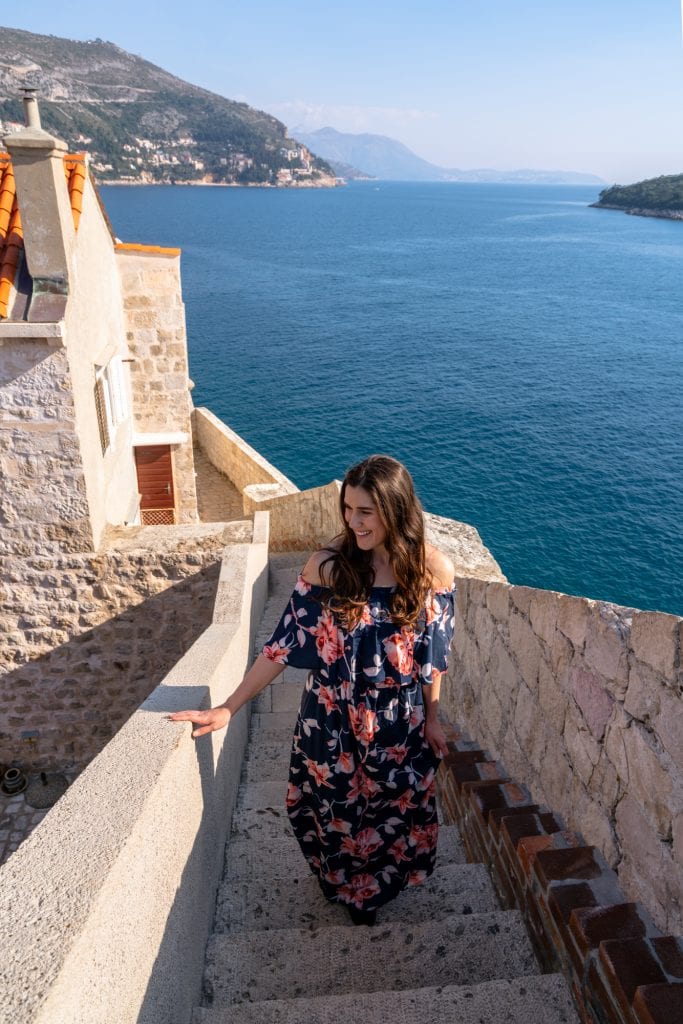
And sure, I had fleece-lined tights on under the dress and a light jacket with me to throw on when the wind picked up–but still.
The unpredictable nature of the weather only gets more dramatic if you’re in the mountains, so keep that in mind!
It’s all about the layers.
Layers will keep you warm and cozy while also saving room on your packing list for Europe in winter.
Chunky sweaters may look great (and if you love them, sure, pack one), but they also take up lots of room in your bag and still require layers underneath them to keep you appropriately warm.
Plan ahead: and seriously, that base layer I mentioned in the winter wardrobe section above is worth considering.

Keep the sun in mind.
Winter in Europe is characterized as being dark and gray, and the further north you go, the truer that is.
When making plans for your trip, keep in mind that there are times of the year where even in central and southern Europe you can expect the sun to set well before 5:00 PM.
If you have plans that depend on having daylight–like typical landmark photos, for example–plan accordingly (and consider packing extra batteries and a tripod to get some great night shots–we took the below photo on a cold but glorious February morning in Rome).

Pick a great coat, because it’ll be in all your photos.
I mentioned this above, but it bears repeating: there’s a reason that the vast majority of our winter photos from Europe show us in whatever coat we happened to have packed for that winter trip: it’s far too cold to bother taking them off!
Your coat will end up in just about all of your photos, so make sure that you pack one you truly love.

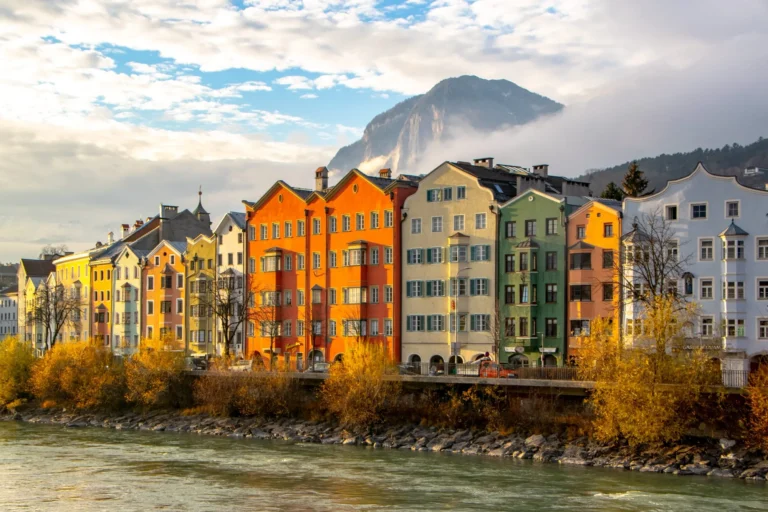


Hi! I just found your blog and fell in love, and this packing list is super useful! We’re doing a 1-month honeymoon in Europe (Netherlands, Belgium, Denmark, Spain, Portugal, Italy). We are from South America and totally confused about layering haha! We’ll have to buy everything, so I’d love to know what you recommend. I want to be as minimalist as possible. I read you use a base jacket (the North Face one), a big coat, and a rain jacket. Would you recommend getting just a base jacket and a big waterproof coat? I do have a normal synthetic quilted jacket (kind of like this regatta It’s from this brand but I couldn’t find the exact model) from when I was in Scotland 6 years ago -in autumn haha. Does it count as one of the 2 things I’m planning to get? Or none? Or both? Thank you!!!
Hi Samantha!
First off–congratulations on your wedding and honeymoon! You guys are going to have the best time. 🙂
Personally I don’t generally use a rain jacket in the destinations you’re visiting, I save those for places like Ireland/Scotland/Iceland where I might be hiking outside in the rain or walking under waterfalls, for example. In your case, I’d likely stick with a travel umbrella, but that’s also a bit of personal preference–Jeremy brings his rain jacket more places than I do.
Assuming you’re visiting cities and towns rather than, say, going skiing in the Dolomites, what I’d personally wear in the destinations you mentioned during winter is some combination of fleece-lined tights, a dress, warm waterproof boots, and a big peacoat or puffer with a scarf/hat/gloves. If it was very cold I’d add a base jacket (yours would definitely work) and possibly pants + fleece-lined leggings instead of a dress with fleece-lined tights (Europeans don’t really wear leggings the way people from the US like me do, but under a coat it’s all the same, at least to me 🙂 ).
In southern Spain/Portugal or southern Italy there’s a good chance you’ll need even less than that, but you’ll want the layers further north. The Netherlands/Belgium/Denmark get cold, and it’s a damp cold that sticks to your bones, so to speak.
Meanwhile in Lisbon, I walked around on New Year’s Day in a t-shirt. So you’ll likely have quite the variety! Here’s our guide to Portugal in winter to give you an idea of how that might look (much of Spain’s popular cities like Seville will be similar in climate, but it varies widely): https://www.ourescapeclause.com/portugal-in-winter/
Hope that helps a bit! But to keep it very simple: think layers, but don’t sweat the details too much–you can find an extra sweater, hat, pair of gloves, etc. absolutely anywhere, and they make great souvenirs!
Great write up which helped solidify my thinking. What about dress shoes for a nice dinner out eg Christmas Eve dinner and Christmas day lunch? I’ll be wearing a nicer outfit but not sure if my heavy duty day boots will look good . Any thoughts?
Hi Beth,
I’d imagine it depends a bit on personal style and what day boots you’re bringing! These days, I generally opt to pack one pair of very neutral black or brown boots that can be dressed up or down if I think I’ll need to dress up a bit. I wouldn’t necessarily bring a pair of heels or anything like that–probably more trouble than its worth.
If you’re going for a couple weeks or more, there’s also always the option of picking up a pair of nice shoes on the road and combining souvenir shopping with the convenience of carrying an extra pair of shoes at the beginning of your trip. I’ve done that once or twice, too!
Great insight into what I need to pack for Europe! Thank you so much x
Happy to help! Have a great trip. 🙂
In your pictures at the beginning, what brand/type of boots are you wearing (the ones with white fleece material outside the top of the boots)? Thanks!
Hi Dre! Unfortunately, I don’t know, I bought them at a random shop in Budapest several years ago and don’t have them anymore. I loved them, though. 🙂 These days I’m mostly wearing my waterproof Ugg Kesey motorcycle boots to stay cozy!
Thank you for the thoughtful in-depth write up and all the links! I was questioning bringing a few dresses, but you’ve made me feel confident they will work well for my upcoming trip.
So glad to hear it, Eva! Hope you have an amazing winter trip to Europe!